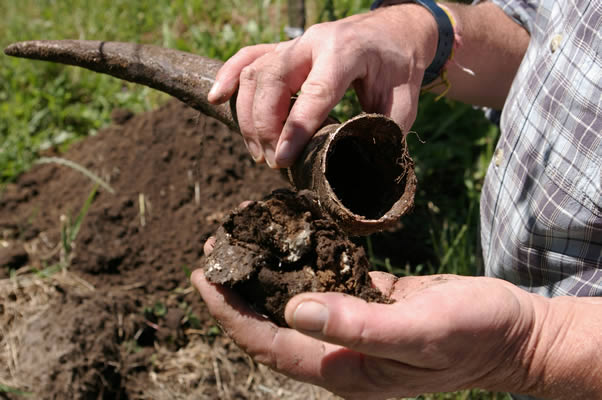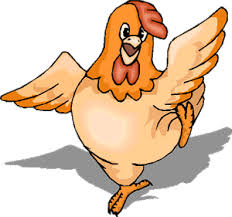Growing Green, The Emerging Trend in Winemaking
Beth Ribblett
 Going Green has become the catch phrase of the decade and the wine industry is seeking to define itself in this growing movement of earth friendly practices. Many wineries are touting themselves as sustainably farmed, organic or biodynamic. So what do the terms means and do they really have and effect on the wine? We've been exploring this subject tastings and articles lately but have decided to take it one step further. Read on and see what Swirl is doing to help you make educated choices concerning your wine selections at the shop.
Going Green has become the catch phrase of the decade and the wine industry is seeking to define itself in this growing movement of earth friendly practices. Many wineries are touting themselves as sustainably farmed, organic or biodynamic. So what do the terms means and do they really have and effect on the wine? We've been exploring this subject tastings and articles lately but have decided to take it one step further. Read on and see what Swirl is doing to help you make educated choices concerning your wine selections at the shop.Sustainable Farming
According to the University of California, Davis: “Sustainable agriculture integrates three main goals--environmental health, economic profitability, and social and economic equity. Sustainability rests on the principle that we must meet the needs of the present without compromising the ability of future generations to meet their own needs. Therefore, stewardship of both natural and human resources is of prime importance. Stewardship of human resources includes consideration of social responsibilities such as working and living conditions of laborers, the needs of rural communities, and consumer health and safety both in the present and the future. Stewardship of land and natural resources involves maintaining or enhancing this vital resource base for the long term.” A great and wordy concept however, there are no hard and fast rules that define the term, it’s up for interpretation by the winery as to what procedures and processes they will use to id entify themselves as “sustainable”.
One of our producers, Fog Alley, defines themselves as such and has defined three indicators of Sustainable Agriculture:
1. Environmentally Sound
2. Economically Feasible
3. Socially Equitable
Some specific practices implemented by Fog Alley growers include:
-Natural Biological Control -- encourages natural predators to control rodents Soil Welfare -- by using a variety of cover crops to protect and enhance the productivity of the soil
-Recycling of Natural Resources -- reclaims water used by facility through a series of ponds that is later used to irrigate the vineyards
-Improving Wildlife Habitat -- directs the run-o_ of rain water to the natural wetlands nearby
-Education -- developing demonstration vineyards used for regular vineyard management training and education of customers
Organic Farming
Organic farming is very well defined when compared to sustainable agriculture. There are nationally sanctioned organic practices that must be complied with in order to label products as "certified organically produced," making it very clear what certified organic means.
In the vineyard organic means cultivating the soil and planting cover crops, instead of applying herbicides. It means using natural fertilizers, such as composted animal manure, versus chemical fertilizers. As for not using pesticides, the organic alternative is to encourage natural predators of insect pests instead of using poisonous insecticides. Organic farmers promote "biodiversity" and allow plants other than vines to grow in and around the vineyard.
In the cellar, "organic" suggests minimal processing and no use of chemical additives. Organic winemakers pay particular attention to three factors: the use of yeasts, the filtration/fining method, and the use of sulfur dioxide. The need for cultured yeasts in organic winemaking is reduced by the farming practice itself, for wild yeasts remain present, unperturbed by weed killers or insecticides. Therefore their use is limited to difficult weather conditions which would threaten the harvest. The physical treatment of the wine (like filtering and fining) is kept to a minimum. Minimizing the use of sulfur dioxide as an antioxidant is stringently observed. It's rather difficult to make a wine that will keep well without adding at least some additional sulfites to those naturally occurring.
Tablas Creek defines their organic vineyard practices as: "Our organic vineyard practices following the lead of our Beaucastel estate in Chateauneuf du Pape. Like Beaucastel, we use no herbicides or systemic pesticides in the vineyard. We rely on cover cropping, hand hoeing, burning, and mulching to suppress weeds in the rows. Cover crops minimize erosion, host beneficial insects, and return nitrogen to the soil. We use extensive composting, and use compost tea to control mildew in the vineyard and reduce our need for sulfur." All of their wines have been organic certified since in January, 2003.
Biodynamic Farming
Biodynamics, goes well beyond the stringent guidelines of organic growing. It's about believing in the self-sustainabilty of the vineyard as well as viewing the practice of biodynamic farming in a holistic manner. Biodynamics mixes sustainability with more celestial beliefs and takes a spiritual as well as m
 ystical approach to conventional farming methods.
ystical approach to conventional farming methods.The practice of biodynamics views the vineyard in its entirety as a living system. And, it's not just about the vines and grapes. It's also about the soil, compost, insects, and other vegetation and animals that inhabit space in the vineyard, all working in harmony to bring you some incredible tasting wines.
The concept of biodynamic farming dates back to the 1920s and Austrian philosopher, scientist and anthroposophist Rudolf Steiner. In a sense, biodynamics is an extreme form of organic farming, which avoids inorganic substances and chemical fertilizers and relies only on “natural” techniques. Biodynamic farming is associated with practices such as over-wintering manure in cow horns, fermenting flowers in stags’ bladders, or timing procedures with the phases of the moon. But while these techniques sound eclectic and obscure, they’re in fact “a way of life, a philosophy of farming that’s thousands of years old,” according to Bruno Allaire, president of Dynamic Imports, an importer and distributor of wines made exclusively from biodynamic or organically-grown grapes.
But biodynamic farming isn’t just an agricultural method. To Steiner and his followers, it’s a holistic philosophy of life forces that treats all of cosmos as a living system and emphasizes factors like energy, lunar cycles and planetary forces. Basically the idea is that everything in the cosmos—people, plants, animals and stars—are interconnected, influencing each other. While this sounds ecologically responsible but somewhat lofty, the reasons for more and more vintners going biodynamic have to do with the fact that the biodynamic method really brings out the terroir of a wine. And that's what it's all about, right?

So how can Swirl help you make educated choices concerning your wine selections at the shop? Over the next few weeks you'll be seeing a new bottle tag that will indicate whether a winery is applying any of the above practices. Just look for this special tag and you just might find out that one of your favorite wines is already "growing green"!





